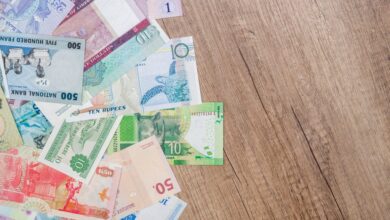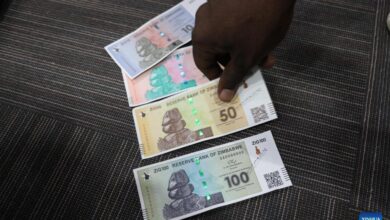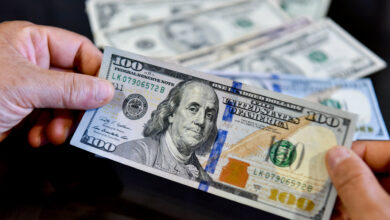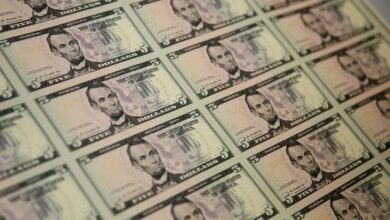Currency swap: BB supplies over Tk6,500cr to banks in just 3 days

Experts said supplying easy money to banks conflicts with the central bank’s latest contractionary monetary policy stance
The newly introduced currency swap mechanism is gaining traction, as evidenced by the Bangladesh Bank providing over Tk6,500 crore to banks within a mere three-day period, in exchange for nearly $600 million, addressing their liquidity challenges.
Banks swiftly turned to the central bank to access funds at a favourable 2.7% interest rate, significantly lower than the 8% borrowing rate through a repurchase agreement, also known as repo.
Currency swap enabled the Bangladesh Bank to shore up its gross reserves as banks have been exchanging dollars from their nostro accounts (accounts held by domestic banks in foreign countries).
According to Bangladesh Bank data, the gross reserves saw a modest improvement, rising to $20.5 billion on Tuesday from $19.9 billion on 14 February.
The influx of dollars via the currency swap will not contribute to replenishment of net reserves, as these represent short-term obligations. Net reserves are determined by deducting short-term liabilities from gross reserves.
Experts, however, said supplying easy money to banks conflicts with the central bank’s latest monetary policy, aimed at tightening the money supply to control inflation.
With the newly supplied low-cost fund of Tk6,500 crore, the money market is anticipated to be impacted by over Tk33,000 crore, taking into account the money multiplier effect.
The money multiplier stood at 5.13 at the end of December 2023, which means every Tk1 of the central bank’s money can generate around Tk5.13 worth of money supply in the economy.
A higher money multiplier value signifies that the banking system can produce a greater money supply from the funds provided by the central bank.
Zahid Hussain, the former lead economist at the World Bank’s Dhaka office, told TBS, “This [currency swap] approach dilutes the contractionary stance of monetary policy. Such internal inconsistencies undermine the policy’s credibility and, consequently, its efficacy.”
In the latest monetary policy for the second half of FY24, the central bank increased the key policy rate, also known as the repo rate, by 25 basis points to 8%, effectively making money more expensive for banks.
The repo rate was hiked amid a severe liquidity crunch among banks and soaring money rates, aiming to alleviate still-elevated high inflation, which reached 9.86% in January of this year from 9.41% in December.
Currency swap: Reasons and implications
On 15 February, the Bangladesh Bank introduced a currency swap guideline, under which it will buy dollars from banks at the spot rate in exchange for the taka. The new arrangement aims to rebuild foreign exchange reserves and ease local currency liquidity stress.
The severe dollar shortage now put banks into liquidity stress as the central bank mopped up Tk 1 lakh crore from the market by selling $9 billion from the reserve in the first seven months of the current fiscal year.
Amid this liquidity crisis, banks have been borrowing Tk 50,000 crore daily from the central bank through repo, which is a short-term borrowing arrangement primarily involving government securities.
Given the circumstances, the central bank introduced the currency swap arrangement to provide accessible funds, as the 8% repo rate is deemed too costly for banks to borrow.
As per the currency swap guideline, the interbank reference rate, presently set at Tk110 per dollar, will be regarded as the spot rate.
While repatriating their dollars, banks will be subject to an interest rate that is lower than the repo rate. In this scenario, the interest rate will be determined by the variance between the three-month average SOFR for the dollar and the repo rate for the taka, as outlined in the central bank guidelines.
For instance, at present, the Secured Overnight Financing Rate (SOFR) rate is 5.3% and the repo rate is 8%. The difference is 2.7%, which will be charged annually to banks for the swap.
Banks will reclaim their dollars at a nearly identical rate to the one at which they initially exchanged them with the central bank. Every transaction necessitates a minimum value of $5 million and its corresponding amount in taka, with a duration ranging from 7 to 90 days.
The Bangladesh Bank supplied money through the currency swap in three days starting from 20 February and most of the private banks participated in the new arrangement.
While talking with TBS, a treasury head from a private commercial bank stated that they opted for a currency swap due to its lower cost compared to the repo rate.
He said purchasing dollars from the central bank had led to a liquidity crisis in banks. Currently, the dollar liquidity has marginally improved following restrictions on imports. Consequently, banks with surplus dollar holdings are accessing low-cost funds to address their liquidity challenges.
Describing another reason for the liquidity crisis, Syed Mahbubur Rahman, managing director of Mutual Trust Bank, said a 100% margin for opening Letters of Credit (LCs) and at-sight payment for LCs put pressure on liquidity. Importers are now opening LC at sight payment instead of deferred payment fearing currency devaluation which will increase their costs in future.
An LC at Sight is a document that ensures payment of goods provided by an exporter to an importer.
Banks now require increased liquidity to fulfil the demand for loans necessary for opening LCs. The slight improvement in dollar liquidity is attributed to monthly remittance inflows consistently exceeding $2 billion and the current account transitioning into a surplus, Mahbubur Rahman added.




